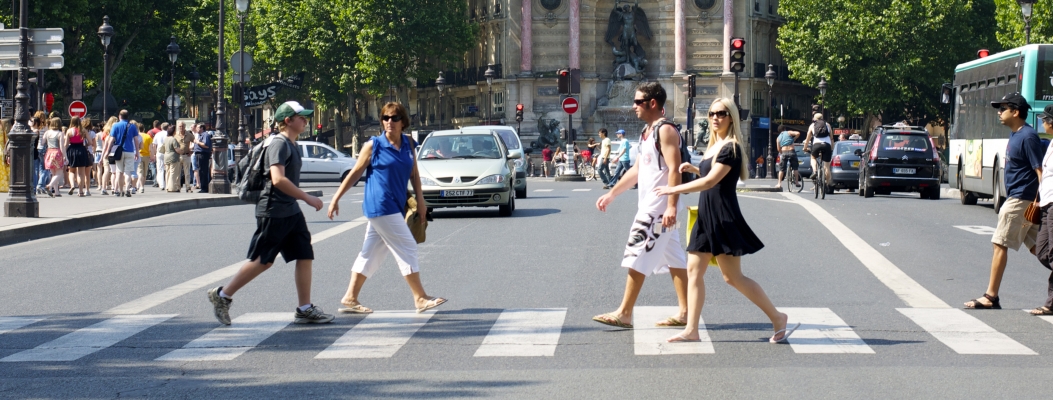Watch presentation (no audio, slides only)
WEBINAR VIDEO
WEBINAR SLIDES
Missed the presentation or want to look back at the slides? View the slides here.
WEBINAR SUMMARY
This webinar discusses research exploring how social identity factors (race and gender) influence drivers’...
Read moreThe video begins at 2:16.
Abstract: Reliance on the automobile for most trips contributes to costly trends like pollution, oil dependence, congestion, and obesity. Germany and the U.S. have among the highest motorization rates in the world. Yet Germans make a four times higher share of trips by foot, bike, and public transport and drive for a 25 percent lower share of trips.
This presentation first investigates international trends in daily travel behavior with a focus on Germany and the USA. Next, the presentation examines the transport and land-use policies in Germany over the last 40 years that have encouraged more walking, bicycling, and public transport use. Using a case study of policy changes in the German city of Freiburg, the presentation concludes with policies that are transferable to car-oriented countries around the world.
Bio: Ralph Buehler is Assistant Professor of Urban Affairs & Planning and a Faculty Fellow with the Metropolitan Institute at Virginia Tech in Alexandria, VA. Originally from Germany, most of his research has an international comparative perspective, contrasting transport and land-use policies, transport systems, and travel behavior in Western Europe and North America. His research falls into three areas: (1) the influence of transport policy, land use, socio- demographics on travel behavior; (2) bicycling, walking, and public health; and (3) public transport...
Read moreWatch video
View slides
There is growing support for improvements to the quality of the walking environment, including more investments to promote pedestrian travel. Planners, engineers, and others seek improved tools to estimate pedestrian demand that are sensitive to environmental and demographic factors at the appropriate scale in order to aid policy-relevant issues like air quality, public health, and smart allocation of infrastructure and other resources. Further, in the travel demand forecasting realm, tools of this kind are difficult to implement due to the use of spatial scales of analysis that are oriented towards motorized modes, vast data requirements, and computer processing limitations.
To address these issues, a two-phase project between Portland State University and Oregon Metro is underway to develop a robust pedestrian planning method for use in regional travel demand models. The first phase, completed in 2013, utilizes a tool that predicts the number of walking trips generated with spatial acuity, based on a new measure of the pedestrian environment and a micro-level unit of analysis. Currently, phase two is building upon this tool to predict the distribution of walking trips, connecting the origins predicted in phase one to destinations. This...
The video begins at 0:49.
It has been nearly 25 years since non-motorized modes and non-motorized-specific built environment measures were first included in the regional travel demand models of metropolitan planning organizations (MPOs). Such modeling practices have evolved considerably as data collection and analysis methods improve, decisions-makers demand more policy-responsive tools, and walking and cycling grow in popularity. Many models now explicitly consider the unique characteristics of walking travel, separate from travel by bicycle. As MPOs look to enhance their models’ representations of pedestrian travel, the need to understand current and emerging practice is great.
This project presents a comprehensive review of the practice of representing walking in MPO travel models. A review of model documentation determined that – as of mid-2012 – 63% (30) of the 48 largest MPOs included non-motorized travel in their regional models, while 47% (14) of those also distinguished between walk and bicycle modes. The modeling frameworks, model structures, and variables used for pedestrian and non-motorized regional modeling are described and discussed. A survey of MPO staff members revealed barriers to modeling non-motorized travel, including insufficient travel survey records, but also innovations being implemented, including smaller zones and non-motorized network assignment. Finally, best practices in...
Read more
